About me
Howdy! About me? Well, let's see...my occupation changes frequently. Sometimes I'm a crash-dummy repairman. Sometimes I'm an assistant blogger. And sometimes, I part-time as a professional "Before" model. Look for me on late-night informercials starring kids who have bad acne.
In a previous life, I was a translator. I turned squiggly Arabic words into pointy English ones. Then a war happened, and now I have bad karma.
________________________________________
I like playing the video games, especially survival horror types. I am going to one day master the Japanese language. And when I get there, I plan on offering a fan translation for several Japanese games. Maybe work for an anime studio and make my own cartoons. I am a horror gaming enthusiast, so check out my lists and friend me if you're the same.
________________________________________
Occupation: Placebo Taste-tester
Married
About my collections
My Game Lists:
PS1 Horror Games List | PS2 Horror Games List | What You're Favorite Games Could've Looked Like | My Video Game Firsts | Classical Music in Games | Vampires in Video Games
Other Lists I've Made:
Politicians Who Cheated | As Deep As The Sea: The Arabic Language | Sexy Women in the Kitchen | what a title tells me about a movie | The ABC's of One-Letter Film Titles | Kaoru Wada
My Game Reviews:
Sega CD
Mansion of Hidden Souls
Sega Saturn
Deep Fear | The Mansion of Hidden Souls | Enemy Zero | Lunacy
Sega Dreamcast
The Ring: Terror's Realm
Playstation
Koudelka | Virus: It is Aware | Galerians | Chaos Break | Overblood | Echo Night | Hell Night | Juggernaut | D | The Note | Necronomicon: The Dawning of Darkness | Silverload
Playstation 2
Echo Night: Beyond | Curse: The Eye of Isis
Lists
2 votes
Favorite Images
(2 items)
list by astro_man23
Last updated 11 years, 12 months ago
3 votes
Favorite Lists
(10 lists)
list by astro_man23
Last updated 12 years, 6 months ago
|
Recent reviews

Posted : 12 years, 5 months ago on 22 June 2013 02:06
(A review of
Glass Rose)
The 2003 Cing/Capcom release Glass Rose for the PS2 is, by all outward appearances, exactly the kind of game I would trip over in a mad dash to play. It is a murder-mystery, clue-based point-and-click that takes place at the height of the 1920s, the beginning of Japan's Showa Period and a time in history that I'm personally interested in. Not only this, but I understood before going into Glass Rose that it made heavy use of a unique kind of dialog system. And dialog, in my mind, is the perfect platform for character development. So, basically, I was really going into this game with high hopes.
I would be flat-out lying if I said this game met my expectations. In fact, it was a big disappointment. But I'd be just as wrong to say it was a terrible game. It would be unfair to say "Glass Rose sucked because I didn't like it." Well, I didn't like it. But I will tell you what this game did great and what it did so shittily it made me want to cry.
First, let's talk about the game's appearance. Glass Rose is graphically very beautiful. The entire game is played in one large mansion and, despite the obvious monotony built into a one-environment game, it is visually eye-pleasing. Something about the game's lighting was very soft and dreamy. There are details galore and just about anything can be clicked on for a brief description by the main character. So on this note, Glass Rose gets a big thumbs up.
Speaking of notes, the music was also something I can't complain about. Like the visuals, the soundtrack seemed to sweep me away at times into a sleepy state of mind. It was just so mellow and basic. I'm not a music guy, but I can say that the visual and audio aspects of the game were in perfect agreement.
What didn't agree with this carefully and artfully built mood of the game was the plot itself. So, let's talk about that for a paragraph. To begin with, you play as Takashi Kagetani from modern times (the 2000's) who is introduced to an old serial murder case from the 1920s by his friend Emi Katagiri. They visit the site of these murders, the derelict Yoshinodou Mansion, and (somehow) accidentally time-slip back to the time of the murders. Takashi and Emi are now in the 1920s but in separate dimensions (?). It's up to Takashi (who, by the way, was modeled by the J-POP star Masahiro Matsuoka ((who, by the way, was in Godzilla: Final Wars))) to collect shining fragments of Emi's heart about the mansion so that, together, they can return to our time. In the process, he must also solve the serial murder case. The only thing is, for some strange reason, everyone thinks that Takashi Kagetani is someone named Kazuya Nanase. And the plot just keeps on thickening until it is basically gravy.
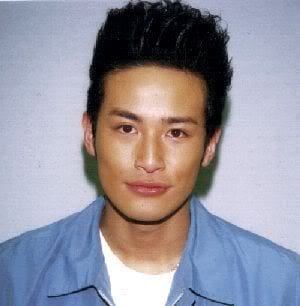
Hey guys, sup?
So far, it sounds a little wacky but not that bad, right? Here's where the game falls to pieces. As Kazuya, you get to explore the mansion and speak with all the NPCs (there's something like two dozen of them), picking up clues from your conversations with them. Virtually every interaction you have with them takes place via the game's Free Word System. Here's how it "works": your investigations lead you to a conversation with an NPC, some spoken dialog occurs followed by a pause in the conversation and a dialog pop-up box with most of what that character just said. You are now given the opportunity to highlight words or phrases to guide the next part of the conversation. The conversation itself can branch and you can view the "branching flow chart" during this dialog mode at any time to see how much of the conversation you have cleared. In theory, that doesn't sound bad. In practice, though, it is horrible. You are expected to highlight exact specific words, letters, or phrases to get any response from the NPC's. Even if you accidentally select a space character (yes, a space character) along with the word that needs to be selected, your conversation partner will look at you dumbly and say something like "Derr, I don't have anything to say to that, Kazuya..." This fault of the game wouldn't be so glaring if you didn't spend 90% of your time in the conversations.
Okay, let's say you're going to use a FAQ (there's a great one up on gamefaqs) or let's say you have the patience of a saint and are willing to explore every gritty aspect of every conversation with every NPC in a game. Let's say that. You'd still hate it, because the fucking NPCs don't say anything useful to begin with! But you have to talk to them. There's no way around it. Not only that, but half of your conversations with them will be nothing more than repetition, as in the following illustrative example:
"Tell me about your sister."
"My sister?"
"Yes, your sister. Tell me about her."
"Kanae is my sister."
That's right. There is 16-20 hours of that. Granted, this kind of listener-oriented dialog is very characteristic of the Japanese language. We have a little bit in English, too. But the direct translation into English just didn't work. It's a game built on this "free word system" so the translation was obviously going to be a tricky issue to begin with.
Well, what about the mystery? I just wasn't impressed. Maybe if the game had been condensed to 8 hours and the "free word system" had been way more intuitive and forgiving, I would've enjoyed the story more. There are four endings, depending on how many random tasks you manage to accidentally do, but I could not bring myself to do any more than just one ending. You do get to save whenever you want, so at least you have that.
The company that made this game, Cing, later went on to put out some pretty dang good games on the Nintendo DS, including Hotel Dusk and Another Code. But Glass Rose was their first game and it was totally a chore to play. It had all the elements of a game that should work, but it didn't. Even though I didn't enjoy this game at all, there are things that were done very well. The concept of the game is solid. The graphics and music were just fine. But the story got really soapy toward the end, and, even if you like that kind of thing, everything was still warped by the monotony of the environment and the horrible "free word system." I wish I could say I loved this game, or even liked it, but I can't.

0 comments,
Reply to this entry

Posted : 12 years, 5 months ago on 14 June 2013 09:01
(A review of
JU-ON: The Grudge)
Even as a gentle reviewer of survival horror games, I struggle to find many positive things to write about Ju-On: The Grudge (Nintendo Wii, 2009). So I will start, benignly, by describing the game's critical faults and end with a few favorable points (and few they are indeed).
To begin with, the controls were frustratingly out of sync with my movements. You control one of four (five if you bother to unlock the game's secret final stage) characters in the first person, moving about by holding the B button. You control the flashlight you hold using the Wiimote pointer. But the pointer does double duty as it's also the way you turn in the game. And that design choice was horrible. Turning gently to one side or another sends the flashlight wildly out of control, which in turn causes you to lose all control of your character. The only remedy is to wait for the Wiimote to restabilize on the screen. Turning and flashlight control should have been independent things, for the love of God. But Ju-on doesn't require the Nunchuk, so I guess there was no other option for turning the character. The controls are a game-long struggle, just so you know.
As you play, you are constantly losing battery power, which is this game's take on a life bar. You find spare batteries as shimmering objects throughout the environments. Honestly, you won't be too troubled by the constant search for spare batteries because they are conveniently strewn along your path, not hidden. But reaching a shining item from, say, the other end of a room takes a short eternity because the characters move at a maddeningly slow pace. And there's no running. Everything is a slow, slow, creep.
Also in each environment are cleverly hidden secret items. You keep a running tally of these and can complete each scenario's secret item list with multiple playthroughs. Even if you die, the game will save the item in your archive as long as you found it before dying.
As for dying, this happens automatically if you run out of battery power or fail one of the "action" sequences. These entail copying motions that flash on the screen or keeping a cursor within a shrinking circle. Fail these, and you fail the level.
There are plenty of little non-action scares everywhere in the game, so exploring is kinda not a waste of time. But these "boo!" moments aren't really that great. The flow of your tasks is also somewhat confused by the fact that you must witness some of these scares before others open. Generally, the game will provide some kind of hint, even if it's not a great one.
In terms of the story, Ju-on: The Grudge gets a big fat fail. You have no idea what you're doing or why you're doing it (unless you've recently seen the movies, which I have). If you remember (or give a shit), anyone who comes in contact with the grudge is damned. Each of your four characters, a delivery guy, a security guard, etc., has somehow crossed paths with the grudge girl (I forget her name) or Toshio (the cat-boy ghost). So, no matter what you do, your characters die. The last level is the haunted house. And the ending, well, just fucking sucked.
As for what Ju-On: The Grudge did right? It didn't do a terrible job setting a dilapidated atmosphere: you play in run-down, derelict buildings, for the most part at night and all by yourself. I honestly don't remember any BG music, so, if there was any, it was totally forgettable. (I played and beat the game, watched the movies, then played and beat the game a second time.) Some of the peripheral scares in the game (ambient noises, scratches, blood stains, etc.) weren't half-bad. But they weren't exactly half-good, if you know what I mean. The hidden items feature was good. Probably the most positive thing of the whole game. Well, that and it was a short play (less than 4 hours for a complete slaying). Oh, and there's also a completely stupid haunted house mode that tests your "scare factor." Don't worry, no matter how un-scared you are, it'll call you a sissy girl. Which, by the way, isn't sexist at all, is it?
What went wrong? For starters, this game should've used the Nunchuk and the C stick for moving. Next, the story of the four characters should have been developed at least a little bit. I mean, you meet each character for about 10 seconds before you start. Musically and SFX-wise, the game was completely blah. Finally, everything was repetitive. Re-play value is virtually non-existent because the same scares are done in the same order every playthrough. No randomization or anything. It's the same adventure, the same boring experience every time. So, get it only if you're a die-hard collector and don't mind forking up serious dough (like $50-$80) to play this. If you kinda liked the movie and wanted to play this, seriously, let me save you the grief and money. For a survival horror, it's not scary and for a video game in general, it sucks.
3/10

0 comments,
Reply to this entry
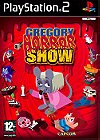
Posted : 12 years, 6 months ago on 27 May 2013 04:40
(A review of
Gregory Horror Show)
Gregory Horror Show: Soul Collector (Capcom, 2003) was a brilliant PS2 offering that was, like so many great games of the last two gens, never localized to the United States. Like the 1999 CGI cartoon it is based on, the video game comes from the distant shores of Japan. It is available in PAL format, where (in the U.K. version) the voice acting took on a distinct American flavor. So why this adorable and charming little gem never came to American gamers is utterly beyond me.
You play as a nameless character (boy or girl, your choice) who is staying as a guest in the Gregory Hotel. You have been assigned by a character named Death (a Grim Reaper from Jersey Shore) to retrieve all of the lost souls in the Gregory Hotel. These souls are held captive by the other guests of the hotel, twelve in all, and it is up to you to scheme ways of taking them.
The game is divided into "nights" in which you can steal up to three lost souls before having to turn in for the night, meet Death in your dreams, and give him the souls. When you do this, new guests arrive and the process begins again. But here's the fun part. Before you steal a guest's soul, that guest will flee from you whenever you appear. The only way you can come up with a way to get the souls you're after is to spy on each and every character and learn their whereabouts and their weaknesses. Then, you must devise a clever way, based on their schedule and your recon, to separate them from their soul. Once you manage to do all this, they no longer run from you but at you! And if they catch you, you get to (I mean you have to) watch their Horror Show, which is a goofy cutscene of how they get their revenge on you (usually, taking a quarter to a half of your life in the process). And if you were reckless enough to have a soul in your possession when they catch you, then you lose it! Not only that, but now you're depressed and have to find medicine.
Because you're in a crazy house, you're mental gauge (i.e., life bar) is constantly decreasing. You must replenish it by eating herbs or by reading one of the dozens of books you can find in the hotel or buy. Reading increases your mental strength and decreases the rate at which your life diminishes. But you can also get tired, which leads to headaches, which leads to nervousness, which leads to melancholy, and so forth. You must address these issues in the real-time of the game. Everything follows a 24-hr pattern that repeats, and as you spy on your fellow guests, you keep a memo log of these patterns that will help you when you formulate your plan.
So, basically, Gregory Horror Show involves a good deal of exploration, inventory management, and sneaking. You are also responsible for keeping track of the time and your own health issues. There are plenty of hidden and secret items throughout the hotel (which gradually opens up as you progress), making exploration fun rather than tedious. The map (on normal difficulty) is more like a radar, showing you the movements of each guest to help you plan your attack. There are also a few characters who give you lots of general hints, including your next door neighbor, the Neko Zombie (zombie cat) and the hotel's manager, Gregory the mouse.
This entire experience is wrapped up in a cute, chibi-like package that your inner kid will appreciate for a good 13 hours. I wouldn't call this an easy game (given all the groundwork you have to do before capturing each soul), but it is not frustratingly difficult by any means. Overall, the game felt quite polished. There were lots of gamer-friendly touches and a minimum of mechanical distractions (sometimes the controls get you in trouble when you're being chased as the camera angle changes). It was a very smooth ride, and it's too bad a whole continent of people never got to play this game.

0 comments,
Reply to this entry
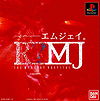
Posted : 12 years, 6 months ago on 16 May 2013 04:09
(A review of
R?MJ The Mystery Hospital)
R?MJ The Mystery Hospital is a 1997 Bandai release for the Playstation best described as a critique of postmodern minimalism in video game art...okay not really. R?MJ, actually, is just a run-of-the-mill first-person point-and-click horror (with Engrish). It is beautiful, to be sure, and quirky, but nothing outside of the mold.
You play as Hajime, one of five characters who have become trapped in a general hospital following a terrible accident that has sealed you in. Or is it really a general hospital? One of your party, Tomowo, has come down with a mysterious illness and you spend the first disc rescuing him and another friend, Aya, who is a nurse. As Hajime, you are free to roam about the hospital's upper floors and basements to search for the necessary items and antidotes. These tasks are performed more or less linearly and, when the game senses you are lost, you are given special "sense hints." With the press of the cross-button, you use one of your five senses to gain extra information about your surroundings. These hints (which arise in the form of spoken clues from your companions) pop up at specific clickpoints. So you're never completely in the dark (assuming you know enough Japanese to understand "Hey, what's that smell?!" or "Do you hear that?"). In any case, you can always just push the cross-button whenever you want.
As you progress through the mystery hospital, you learn that you are being observed by a mad scientist and his hilariously unintelligible (Engrish) henchman, Robert. After surviving the infection and getting through disc one, you must face this madman and Robert in disc two. The locations for the second act involve caverns and ruins beneath the hospital, which are connected to its secret laboratories. You are harassed by diseased, mutated creatures from time to time, and are tasked, once again, with saving your party by judicious use of your inventory.
Because this game was never localized outside of Japan, you will have to navigate your way through Japanese dialogs and cutscenes. Fortunately, this is not much of a problem. The biggest puzzle in the game comes before the disc change, and it uses visual, not spoken, hints. The other puzzles in the game are fairly straightforward. Match an antidote to the right vector. Use the gun item when you are cornered. Find the instruction manual for an item before you know how to use that item. Stuff like that. There are only 22 items in the inventory and a lack of Japanese knowledge will not significantly limit you there. The game also makes use of some timed puzzles, but you are allowed plenty of tries. So, overall, R?MJ is not a real nutcracker. In fact, getting through the mystery with limited Japanese ability was sort of fun.
Graphically, I can't complain too much. Like many first-person point-and-click adventures, you are guided along a set path between clicks and are shown what the developers want you to see. It's not exactly an enormous game world, but it gets the job done. I will whine about the character models, though. They were horrible. Musically the game was also weak and terribly mistimed. And I can't exactly say the voice acting was a high point, either.
In terms of the game story, you are looking at a survival mission with catacombs and mutants thrown in the mix. It isn't too far from the overlooked PSone scifi horror-adventure Overblood (just without any of the moral implications of that game). R?MJ isn't deep. And it doesn't offer much in terms of re-playability, except for a code that opens a gallery of some shots of the nurse character. In the end, good triumphs over evil (even evil in the name of science!). Bla, bla, bla...it's been done a million times.
But, if you are a fan of the first-person adventures or a horror gaming fanatic (like me), then go for it. Like I said, there is no need for complete Japanese mastery to play and beat this game. And if you get stuck, there's even an internet FAQ you can use. You won't say it was the best game you've ever played, but, hey, it's certainly not a bad way to pass 6 or so hours if you want some oldschool fuzzies.

0 comments,
Reply to this entry

Posted : 12 years, 6 months ago on 13 May 2013 04:27
(A review of
Alice on Borderlines)
Alice on Borderlines (1997, Kodansha) is one of those games that has slipped into near total oblivion. Go on and google it. You will find next to nothing as of this writing. This is a little strange, even for a Japanese title, since it's not actually a bad game and is even charming at points. Why this shroud of obscurity then? Who knows. Sadly, lots of great titles have slipped away from our collective gaming memory, especially pre-rendered games like Alice. On the bright side of things, that means there are plenty of gems out there for treasure hunting gamers like me!
Alice controls a lot like W.A.R.P.'s 1996 dark masterpiece, D. You play as Alice in the first-person, guiding her around small yet beautifully detailed environments from clickpoint to clickpoint. You progress more or less linearly through these levels and can get by all three discs knowing little to no Japanese (probably). There are a dozen or so puzzles including geometric piece-fitting puzzles called "Fortunes" (which double as your savepoints) as well as a "rock-taking game" but none of these are really that hard. More than anything, context is your biggest ally.
Because the game is only in Japanese, there may be some difficulty with oral clues. For instance, there is a point where you're flying a makeshift aircraft through a canyon. Your sidekick, a dinosaur child named Bock, tells you which way to turn at first. If you miss it, you can always just retry the other way. When in doubt, process of elimination works in this game, so don't let the Japanese intimidate you.
Alice and its soundtrack are very adventure-ey. This is in sharp contrast to the game I compared it to above, D, which is very atmospheric and broody. Alice is bright and colorful, but its supply of sound effects is terribly lacking. If you're into these pre-rendered kind of games, then check out The Book of Watermarks, which does a terrific job setting the ambience with SFX. Anyway, Alice could've done more in this regard.
Story-wise, the game is about, duh, a girl named Alice who gets involved in her next-door neighbor's otherworldly shenanigans. Her neighbor, Dr. Wolf Steiner, is researching and developing a theory of Gaia. He has successfully built a device that allows its user to travel to a "shadow world" connected to the regular world. In this world, Alice visits a land of fire, a living forest, and a land of ice, among other places, meeting and befriending strange creatures, including a dinosaur-child named Bock, along the way. Flying dragons, giant worms, frozen aliens, talking plants, and dinosaur-people are the sort of characters that make up this game. The levels are thematically arranged (rock, fire, wood, ice, and shadow). In the game's final showdown, you play a ridiculously simple mini-game with an enormous talking mask. So, yeah, it's a little weird but not totally spaced out.
Before the final credits, you are given a series of multiple choice questions by the being behind Shadow. These questions were like a philosophical litmus test of how you felt about Gaia and Shadow. I'm not sure if answering them a certain way unlocks a secret ending. But since the game is not very long, it wouldn't take too long to check.
Overall, Alice wasn't a terrible game but it wasn't great either. It was a bright and, at times, fantastically weird game. It was charming at points but rambling in others. It lacked natural sound effects despite the nature themes, but it had an enjoyable soundtrack. It was short (roughly 3 hours of gameplay) but visually sharp. And even though it had few puzzles, it had very long cutscenes. Unfortunately, you cannot skip them, so it felt more like watching a cartoon than playing a game at times. This isn't a game for everyone. It's certainly not for casual gamers, but it has just enough charisma to charm those of you looking for some oldschool nostalgia.

0 comments,
Reply to this entry
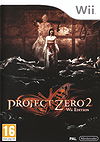
Posted : 13 years ago on 24 November 2012 11:27
(A review of
Project Zero 2: Wii Edition)
For some reason, Nintendo of America, in all its corporate wisdom, is under the impression that games like Project Zero 2: Wii Edition are not worth localizing to the United States but awful games like Calling are. What do you say to that? What can you say to that really but "Thanks, Nintendo. Thanks for telling me what I want to play. Cuz that would be more fucking Mario basketball and first person shooters. What the fuck was I thinking, wanting to play a remake of one of the greatest survival horror games ever made? What's that? Go fuck myself you say? Okay, I'll get right on that." That's what you say.
At least on the bright side this latest Project Zero (or "Fatal Frame" as it's called here in the U.S.) reached English-speaking gamers somewhere in the world. As we Fatal Frame fans know, Mask of the Lunar Eclipse never officially left the shores of Japan. I say "officially" because enough people raged hard enough that some truly awesome fans, translators, and hackers from [Link removed - login to see] put together a completely playable English patch file for the game. Of course, this required U.S. and European Wii users to "mod" their Wii's, which probably makes some corporate tight-ass somewhere in America clench his butt cheeks just a little bit harder, but hey, it's our property; we do whatever we want to it. Long story short: modding the Nintendo Wii is a piece of cake. It's not like the PSP or the PS2 where you have to get into the guts of the system and solder shit on. You don't need a chip and you don't need to buy anything (except a copy of Smash Brothers, which you can just rent) to enable your Wii to play Japanese and European games. I don't want to get into the details here, but you can download all the files you need and step-by-step guides in how to do it.
Anyway, I say all that to say that you will need to mod your Wii to play Project Zero 2: Wii Edition. If you've already done it to play Mask of the Lunar Eclipse, then you should be good to go. As with all these "mods," you will need a legitimate copy of the game, so don't be a gay pirate.
Okay, the remake is stunning. The original game was beautiful enough, but I found certain parts to be too dark. The Wii edition is a bit brighter and draws your attention to lots and lots of little details that have been added. In particular, there were several items in the PS2 version that were in drawers or hidden behind furniture and all you had to do was search the general area to pick them up. That whole aspect is redone in this edition. Now, if there's something for example that is stored in furniture, Mio will go in for a slow peek and open the drawers. This is a really nice touch, but to spice things up every now and then, a spirit called the Ghost Hand will surprise you. Annoying? At times, yes, very. But I can kind of see why Ghost Hand was added. Without it, the sequences of reaching into kimono boxes or behind partitions or peeking down dark wells would lack intensity. There's always a chance that a ghost other than Ghost Hand is waiting for you, too. So on this matter, the remake gets a big thumbs up.
Straight up, though, the Wii version is way easier than the PS2 version. Maybe it's because I've played FF2 several times and games tend to get a little easier each time, but it just seemed like a breeze. Certain "boss" fights, notably the twins in the Doll Room of Kiryu were way easier than I remember. Overall, though, I think the drop in difficulty, if not entirely in my head, is a good thing. You will also find shards of spirit stones now, strewn everywhere throughout the houses. Blue ones will give you 1000-2000 points whereas red ones give you something like 15000-20000 points for the Camera Obscura. These are sort of like "Here, we feel sorry for you. Have some points." Nice, but it makes the game feel easier than I remember it being.
As far as controls, that's one area of the remake I will bitch about. On one hand, the Wiimote seems like the perfect controller for a Fatal Frame game, and maybe it would be, but the two Wii Fatal Frame games control less than great. This one is definitely better than Mask of the Lunar Eclipse, but you will probably find yourself cursing the screen when the viewfinder drifts ever so slightly (on its own, by the way) away from a perfectly framed Blue Ghost. I have no idea why they thought that would be a good idea. The Wiimote pointer is used to move the camera up and down (except it also drifts side to side when you don't want it to) and the stick turns you left/right. To strafe, you have to hold C and use the stick (a very unnatural button combo). To use spirit powerups you have to be locked on (holding Z) and then press C or the down. Down is much more natural. There is no quick turn in camera mode like in the PS2 probably because there just aren't enough damn buttons on the Wii. This makes a few fights (like all the kid ghost fights and any vanishing ghost) obnoxiously more difficult than before. I think this is as good as Fatal Frame controls will ever get on the Wii, though.
On a final note, I will say this. Mio and Mayu were little girls on the PS2. But on the Wii, they are young women. There are lots of not-so-subtle fanservice moments that will make you scratch your head and say "Hmm, I don't remember Mio having tits." It sort of reminds me of Robin Hood: Men in Tights. "Oh, sir, you're back from the war and you've lost your arms...but you've grown some nice boobies."

0 comments,
Reply to this entry
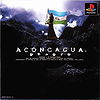
Posted : 13 years, 1 month ago on 14 October 2012 09:15
(A review of
Aconcagua)
Aconcagua (2000, PS1)
WACWAC! SCEI
Once upon a time...for those of us old enough to remember the transition to 32-bits, video games seemed to, practically overnight, take on a whole new dimension - a cinematic dimension. With the power of the Playstation console, games leapt into uncharted territory: CD-quality scores, professional voice direction, CG cutscenes, real-time 3D, and so on. A host of production values that we today take for granted were true state-of-the-art innovations of the PSone era. The mid-1990s was really an exciting time to be a gamer.
Of course, there were growing pains along the way, particularly in regard to voice acting. But the vision that games could provide cinema-quality entertainment was changing everything. Perhaps it was 1998 and the release of Metal Gear Solid that helped us most definitively to this realization.
Few titles, in fact, capture and exemplify the potential of video games as a storytelling medium the way Metal Gear Solid does. Very, very few, in my opinion, but Aconcagua, a little known 2-disc gem from Japanese studio WACWAC!, is absolutely one such title. To describe Aconcagua poses a difficulty, though. Like so many exceptional video games, it refuses to stay put in any one genre. Maybe it's easiest to identify in terms of its gameplay mechanics. Aconcagua is a fully 3D, 3rd-person point-and-click. You control a party of switchable characters who interact with environmental clickpoints and NPCs. But this is only a superficial description of what you can expect. Aconcagua is rich in its design, especially in action, despite its highly economic use of buttons. It is, like Clock Tower, a mouse-compatible game and succeeds in good part because of this minimalism.
The story takes place in Meruza, a fictional war-torn South American nation that straddles the Andes. Meruza was seized by a military dictatorship and has been subject to harsh rule, but the people are stirring for freedom. Pachamama is their chosen leader and a symbol of their hope, the "Meruzan Statue of Liberty." [Link removed - login to see], Pachamama and her bodyguard, Manuel, are en route to the Meruzan capital Horizonte to join pro-democracy supporters. But the military has other plans. A bomb goes off in the cargo hold, hurling Pachamama, Manuel and a handful of other survivors onto the snowy peaks of Aconcagua.
You will play mostly as Katoh, a Japanese freelance journalist with a love for mountain climbing. He was initially on board the airliner to interview Pachamama before her big return to the capital, but now, like the others, his only goal is to survive and get off the mountain. The mantle of leadership falls into his hands. And in true Japanese form, it is Katoh who remains the voice of reason and resolve in the face of crisis, keeping the team focused on the tasks at hand.
A central feature of the game is the contextual nature of your party's interactions. Each party member offers a unique skill which is called for in various situations. Generally, you must use several party members to solve any one task. For instance, Katoh can scale cliffs or cross ice walls, whereas Steve, a mechanical engineer, can rig up all sorts of doohickeys. But simply knowing what to do next as the player is not enough for this game. You must guide your party so that they understand what must be done as well. As you might imagine, all of this builds a healthy dependence on the in-game dialog between party members. You will undoubtedly need to refer to your teammates in the scenarios to move forward. But this in-game chitchat gives more than just idle hints about how to progress in the playscenes; it is interesting for the depth it adds to the characters and setting.
In regard to the characters, you must keep in mind that they are not soldiers but untrained and terrified civilians. They have no weapons and must make do with whatever they find. Your party is not a military unit, but a ragtag group of individuals who have been thrown together into a common nightmare. They just have to make do. The nature of the inventory (consisting of such items as ropes, light bulbs, and even "etiquette" or "barf" bags) reflects their resourcefulness. In short, the puzzle solving and inventory will feel very familiar to fans of the survival-horror genre.
Between this aspect of the game and the plot, you're looking at an experience that falls somewhere between "action" and "survival-horror." Genre definitions are naturally somewhat subjective, but, in its own words, Aconcagua is a "survival adventure." The horror element manifests itself in the attrition and mistrust eroding your party and the relentless pursuit of soldiers whose sole mission is your annihilation. These sentinels belong to the extreme totalitarian regime in control and don't much like the idea that Pachamama somehow survived the attempt on her life. Clearly, what's exploited in this game is the idea that people themselves can be monstrous. Ignorance and power (especially when combined) are sufficient in bringing out the worst in people. It's a sobering but very realistic story element, and the game stays faithful to this realism, never resorting to supernatural evil or superhuman heroics. In a sentence, this is concentration camp/political prison horror, not zombie horror. But it's all done very intelligently with a characteristic Japanese muddling of good and evil that just quenches the desire for a damn good story. So, if that sounds like an interesting change of pace to you, then this is your game. Well...maybe.
There's something kind of funny about this game in that it was never released outside of Japan despite professional English and Spanish voice acting. There isn't a word of spoken Japanese. All of the cutscenes are acted in English or Spanish (95% English, 5% Spanish) and curiously subtitled in Japanese. This certainly makes the game feel very international and theatrical, but it was never given a chance in Europe, America, or any Spanish speaking country. All of the in-game texts (with the exception of item abbreviations in the inventory screen, which are in English) are in Japanese. This is a bleeding travesty, because so much of the game's color is in these dialogs. It is entirely possible to play Aconcagua through even if you can't read Japanese. It would probably require a good deal of guessing, but you'd at least be able to enjoy the cutscenes and the main themes of the plot. Unfortunately, though, the real magic of the gaming experience would be kept from you.
I suspect Aconcagua was never imported because of its point-and-click design. But perhaps it was because the market was too busy with the upcoming Playstation 2. Whatever the case, this game is remarkable. It is the very definition of a hidden gem, and if it wasn't for the language barrier, more people would know it.
*Note: I'm finishing up a FAQ/walkthrough for the game that will include a full translation. But you can check out the game without subtitles by clicking on this youtube playlist I made:
[Link removed - login to see]
For a second opinion of the the game, check out [Link removed - login to see]

2 comments,
Reply to this entry
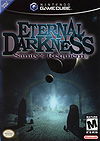
Posted : 13 years, 4 months ago on 5 August 2012 04:19
(A review of
Eternal Darkness: Sanity's Requiem)
It's been 10 years since the release of Silicon Knights' Eternal Darkness: Sanity's Requiem on the Nintendo Gamecube, and I'm a little ashamed to admit that this was my first play of the game. That isn't to say it's the first I'd heard of it. On the contrary, I felt compelled to write this review because of how much I'd read prior to playing. This game makes the Top 10 on practically every horror list on the Internet and is generally considered a "lesser known" title, although how "lesser known" depends on your taste and experience. If you're like me and like hearing what other gamers have to say, then you undoubtedly have heard something about Eternal Darkness (if you haven't played it yourself). And that is probably enough to bias the way you will see the game or even the way you play it.
This isn't necessarily a bad thing, but I have to say, with this game, the less you know going into it, the better your overall experience will be. So, if you are thinking about giving it a shot and have yet to read much about it, you should close this review and just give it a go.
In terms of ED's story, I am reminded of the 1968 quiet thriller from Quebec, Isabel, starring a short-haired Geneviève Bujold, and the fiction of Edgar Allan Poe and H.P. Lovecraft. The game wears the Poe-Lovecraft influence on its sleeves, constantly reminding you of a foreboding presence, an ominous feeling or some other vague sense of the eerie. The entire game revolves around the secrets of the Rhode Island Roivas family and involves traveling to various ages in the past to unravel the Roivas connection with the occult. You play as Alexis Roivas in 2000 A.D., arriving at the estate to tend to your recently deceased grandfather's last affairs. Eventually, you discover the Tome of Eternal Darkness which gives you the ability of magic or "magick." You also find hidden chapters, pages of the Tome scattered throughout the mansion. Each page enables you to travel to another time and reveal more of the story.
Mechanically, ED is very simple and, well, even boring. You wield 3rd-person control over the protagonist of the current chapter. The left stick moves you through the dim, but detailed interiors of the old mansion, of temples and cathedrals and various other locales. During your explorations, you'll come across items or points of interest, indicated by the appearance of the red B button. The action of the B button changes between "Examine" and "Take," which are essentially the only two contexts of interaction in the game.
Camera angles are preset and, sadly, uninteresting. There was much wasted potential in what could have been a very cinematic camera system. At times, the angles were even an obstacle to finding doors, levers or key items, effectively hiding these spots from view, and forcing me to resort to the almost useless map.
There is also a bit of level recycling but monotony within each chapter is kept to a minimum. Overall, you are doing the same thing in every chapter: find Tome of Eternal Darkness, collect weapon, and use magick/items to complete chapter. So there is an overarching repetitiveness to the game, but within each chapter, the tasks are varied enough, even if the same settings return.
As for the "magick" system, it was definitely not my cup of tea, but I won't ding the game harshly on it. My main problem was that the spells are built from runes that have absurd Klingon names. Good luck remembering them.
In terms of difficulty, ED is just right, with few hair-pulling frustrations. Where the game truly shines is in the Sanity system. Again, if you are going to play this game, just stop reading and play it. The Sanity aspect of the game is its selling point. The same idea was used less effectively in games such as Clock Tower 3 and Haunting Ground, but ED did it first and did it best. Again, to get the most out of this, you need to go in as blind as possible, so don't watch any gameplay videos or any spoilers of the kind. The idea of the Sanity system is to mess with your head, and how can it do that if you know what's coming in advance?
Overall, I regret reading anything about this game before playing it. ED does an excellent job at setting the atmosphere, particularly in the mansion scenes. The insane scenes were just downright amazing and more games should explore this idea. But for me, the mood was somewhat ruined by the magic system, the redundant action and the funny plot.
You might be interested to know:
In recent news, it turns out plans for a ED sequel were scrapped by Nintendo after Silicon Knights tried to sue Epic Games and ended up getting countersued instead. It looks like at one point Eternal Darkness 2 was in the works, but now it's anyone's guess.

0 comments,
Reply to this entry

Posted : 13 years, 4 months ago on 5 August 2012 03:30
(A review of
Night of the Sacrifice)
Fuck. me. This is very possibly the scariest game ever made. I'll keep this review short and sweet because you need to go into this game knowing as little as possible.
Let me just say this. You will be startled, creeped out, and chased better than you ever were in any franchise you've ever played. This game makes the Fatal Frame series look like Casper the Friendly Ghost. It just does everything horror right. Perfectly right. If you think I'm kidding...I'm not.
The story is about 5 young adults trying to stop a curse...that's all you need to know. (It's not about the story, really, even though it's interesting.) Yes, the game is only in Japanese. Yes, you will need to softmod your Wii with homebrew to play. Who cares? Mod your Wii. Import this game. And get the shit scared out of you. Now.
Oh, you also use the Wii Balance Board for moving around. You could optionally use the Wiimote to move but why would you do that when you can keep your heart on the verge of an adrenaline-induced cardiac arrest the whole time you play?
Seriously, it is a good work out. My clothes were drenched when I beat this game. With sweat and tears. And probably a little pee.
Bottom line: This game will ruin other survival-horrors for you.

0 comments,
Reply to this entry
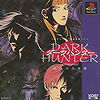
Posted : 13 years, 4 months ago on 2 August 2012 04:23
(A review of
Dark Hunter Jou Ijigen Gakuen)
Dark Hunter (PS1) Review.
This review is for Dark Hunter Part One: Otherworld Academy and
[Link removed - login to see].
Dark Hunter Jou: Ijigen Gakuen 上:異次元学園 (Otherworld Academy)
Dark Hunter Ge: Youma no Mori 下:妖魔の森 (Demon Forest)
異次元 (ijigen) literally means "other dimension" which refers to the homeworld of the "creatures" in the game. The academy is called Jigen Academy, a sort of double entende. The translations of the titles above aren't official.
Dark Hunter is a two-part interactive anime series released by KOEI in April and May of 1997 for the PSone. Part One ("Otherworld Academy") and
[Link removed - login to see] together make up the Dark Hunter story. It's important to know you'd need to play them back to back because neither game makes any sense by itself. Part One literally ends with a To Be Continued screen. Publishing the games separately was an interesting choice given the close release dates, although I scratch my head wondering why Dark Hunter wasn't just a 2-disc release.
Dark Hunter is the second series in a KOEI project called the "English Dream" series (英語体験) aimed at giving Japanese students firsthand experience with the English language. (For more:
[Link removed - login to see]) What this means for you is that you can play this game from beginning to end in English.
Above each game's title on the box art you can see the words "English Multimedia Software." And you can expect short quizzes to pop up from time to time testing your English listening/reading (hence "multimedia"). The prompts are given in Japanese, but the quizzes themselves will pose no challenge and they do not penalize you.

All of the other dialog boxes in the game can be viewed in English or Japanese. You can really play this game without knowing a lick of Japanese. Well, there is one part where you need to know the words for "left," "right" and "behind," which are "hidari," "migi," and "ushiro," respectively. So, I guess you need to know just a lick.
As mentioned, both "Otherworld Academy" and "Demon Forest" can be played in English or Japanese with optional subtitles for either language available. The tracks can be changed during any scene, but the English subtitle track comes with the added bonus of a built-in dictionary. This means that you can play Dark Hunter in the original Japanese by way of very polished, professional English subtitles. Not only that, but you can also pause the dialog at any point to look up the Japanese definition of highlighted words or phrases in a subtitle. If you are so inclined, you can even switch over to Japanese subtitles to test your Japanese listening or transcription. It turns out that this game is an excellent Japanese learning tool for English speakers as well.

I will point out that the Japanese voice acting is vastly superior to the English. I recommend playing the game in Japanese with English subs. If at any point you wish to re-listen to a snippet of dialog, push the X button. From the menu that opens, you can "rewind" scenes with L1, look up words, change the language settings, and switch between the three playable characters: Ran, Mariko and Cher.
The few interactive scenes of Dark Hunter involve clicking the cursor over a moving target or avoiding pursuers in a first-person 3D mode. This mode is sort of a problem in the minigame bossfights, because you can't use the analog sticks. And positioning a slow cursor over a quickly moving target using the D-PAD is a pain in the ass. Some of the fights require nothing short of ninja reflexes to win. There is some degree of predictability in where the next target is, so you can sort of get the cursor ready, but it's still a challenge. Not impossible, but kind of annoying at times.

The non-bossfight interactive parts are like what you'd expect in a point-and-click. You generally know what you need to do, but occasionally you will have to re-check the same clickpoints a few times to trigger the next thing in the game. There's no inventory. There are no puzzles. You're just clicking on stuff and watching clip after clip.
There is a noticeable lag between the clips due to loading. This lag is probably the result of the game loading not only a video scene but multiple voice and subtitle tracks. Because of this, the clips (which make up most of the game) are a bit choppy although not unwatchable. The audio, on the other hand, is smooth.
The game's story is genuinely entertaining (not unlike the stories involving a possessed faculty in the Obscure series). I give an introduction to the plot below. Dark Hunter is essentially an anime in video game's clothing. What really appealed to me about this game, though, was the concept of subtitles you can learn from. I'd love for more games to explore this idea.
Plot Hook:The story of Dark Hunter takes place atop the heavily wooded Mount Chigusa in a school for delinquent students called Jigen Academy. Shrouded in the unnatural shadows of Kubigamori Forest, the Academy overlooks a town called Kimen. In the game's opening scene, the main character, Ran, muses over the irony of the town's name, which is written in charaters that mean "face to the demon." Ran is obsessed with entering Jigen Academy in order to take revenge on those who destroyed his childhood, interdimensional plant- and insect-like parasites called simply "the creatures" (怪物). Ran has spent the last seven years of his life preparing for a showdown with the leader of these kaibutsu, the one most responsible for his family's death, Shogen Kuji, who is the dean of the academy.
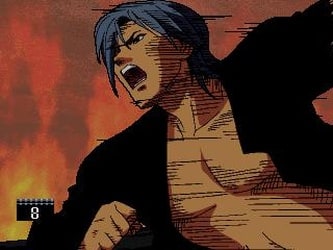
Several years ago, Ran's mother, a powerful psychic, volunteered her life in a secret project to make the X Antibody, a protective antidote against the creatures. It was only a few years after her death that Shogen Kuji and his minions killed Ran's father and elder brother. Protected by the crystal shard left to him by his mother, Ran alone escapes the carnage swearing an oath of vengeance on Shogen Kuji's life. Ran possesses the ability to read people's mind, a gift he inherited from his mother, and right away sees that Mariko is the only student at Jigen Academy who has not been possessed by the parasites.

Mariko also lost her mother at an early age and began suffering from hallucinations. Her step-mother decided that Jigen Academy would be the best place for Mariko and sent her there during her sophomore year in high school. But were her intentions really in Mariko's best interest? Since she got to Jigen Academy, Mariko's visions have stopped, but, for reasons unknown, the creatures have left her untouched.

Cher is the third playable character. She is a CIA agent sent to Jigen Academy to investigate the whereabouts of Charles Kuroda, also of the CIA. Charles is Cher's fiancé, but he has mysteriously failed in his mission to destroy Jigen Academy, Shogen Kuji and the creatures from another dimension. Cher has been sent in to clean up the mess in that rootin-tootin' way only an American can.

0 comments,
Reply to this entry
Movies
TV
Games
Music
Books
DVDs

 Login
Login

 Message
Message
 Home
Home 34 Lists
34 Lists 54 Reviews
54 Reviews Collections
Collections








































 PS3 Horror Games List
PS3 Horror Games List Rachel McAdams, So Beautiful
Rachel McAdams, So Beautiful Top 10 Buster Keaton Films: Feature-Length
Top 10 Buster Keaton Films: Feature-Length Famous Women That Could Possibly Sleep With Me
Famous Women That Could Possibly Sleep With Me what a title tells me about a movie 2
what a title tells me about a movie 2 The Final List
The Final List Original VS. Portrayal: Video Game Characters
Original VS. Portrayal: Video Game Characters The Top 100 Silent Era Films
The Top 100 Silent Era Films yord's Favorite Orators
yord's Favorite Orators Best of "Wild Mass Guess" [Super Mario]
Best of "Wild Mass Guess" [Super Mario] Playstation Games - ranked by preference
Playstation Games - ranked by preference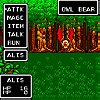 Master System Games - ranked by preference
Master System Games - ranked by preference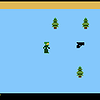 Atari 2600 Games - ranked by preference
Atari 2600 Games - ranked by preference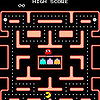 Arcade Games - ranked by preference
Arcade Games - ranked by preference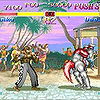 3DO Games - ranked by preference
3DO Games - ranked by preference Devolution of Video Game Characters
Devolution of Video Game Characters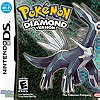 Lifetime Video Game goals to do before I die
Lifetime Video Game goals to do before I die PS2 Videogames I Played
PS2 Videogames I Played My Totally Hideous Women (Just Kiddin,They Hot)
My Totally Hideous Women (Just Kiddin,They Hot)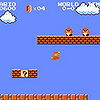 Listal's Favorite Video Game Series (The Results)
Listal's Favorite Video Game Series (The Results) Sexiest Women in Rock
Sexiest Women in Rock Politicians Who Cheated
Politicians Who Cheated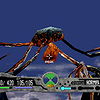 Saturn Games - ranked by preference
Saturn Games - ranked by preference NES Horror
NES Horror 16 Ugliest Men in The History of Rock N Roll
16 Ugliest Men in The History of Rock N Roll Weirdest Reasons I Bought A Game
Weirdest Reasons I Bought A Game The End
The End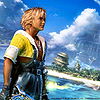 Famitsu - Japan's 100 Favorite Games
Famitsu - Japan's 100 Favorite Games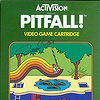 My Video Game Firsts (astro_man23)
My Video Game Firsts (astro_man23)
www.listal.com/list/listals-50-best-movies-2012
I don't know if you have 20 exactly, but if you could at least throw in a handful of your favorites I'm sure he'd appreciate it.
P.S. I'm going to go live with a website a friend and I are working on, and I'll do it at most a few months from now. Hopefully much sooner. Would you be fine with me linking you to it when it's ready? Unless you're curious enough to check it out in its current form on the link on my profile, which I don't mind. It's really not rough or anything right now; just bare in that I need to add pages for more games, reviews for some of these, some more features, and a section for site contributors.
Picture of My profile at Listal
Glad to hear it! =]
And thanks for the vote on De-Motivational Posters and THIS one in particular.
Thanks!
PK
www.listal.com/list/listal-bottom-100-6803
www.listal.com/list/listal-bottom-100-bruinfan222
And if I have any more challenges I'll be sure to let you know. In fact, there's this one where you play Pac-Man until a point in which the game glitches up... ;]